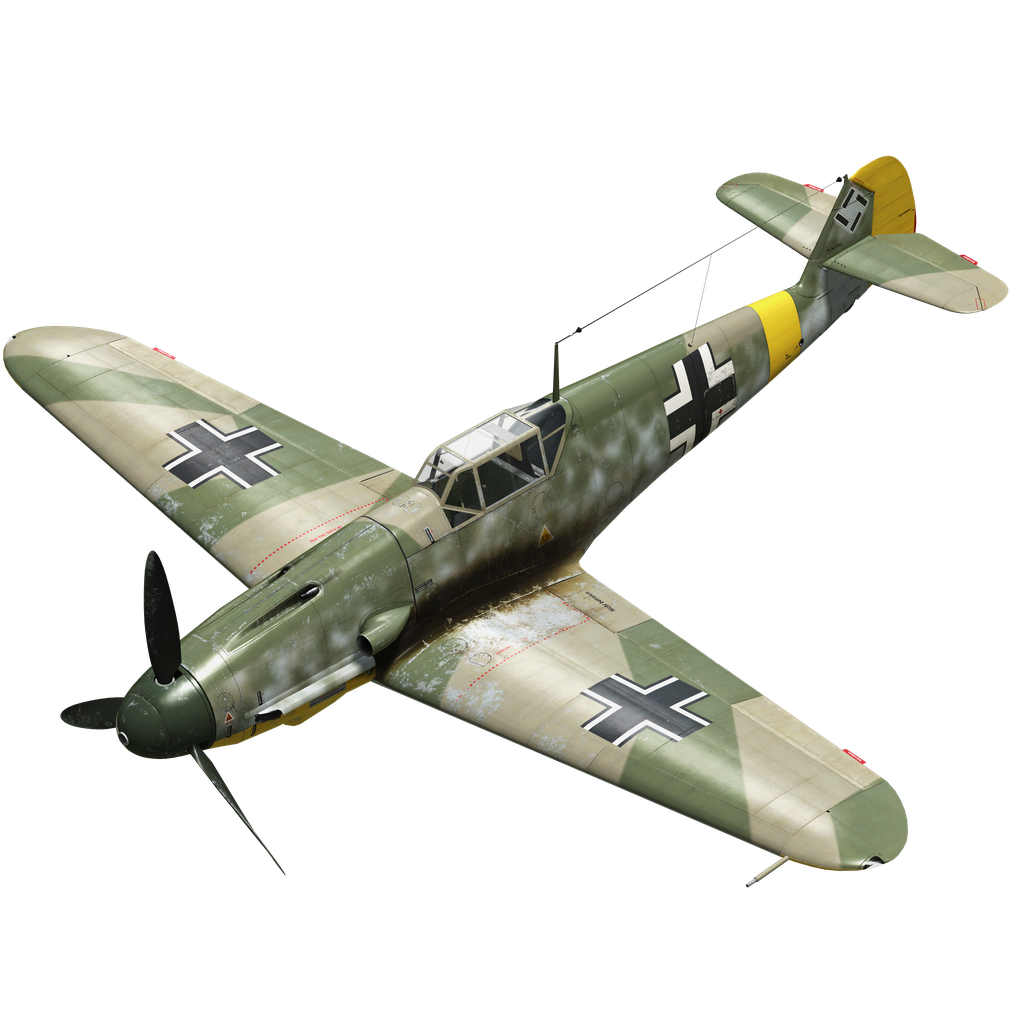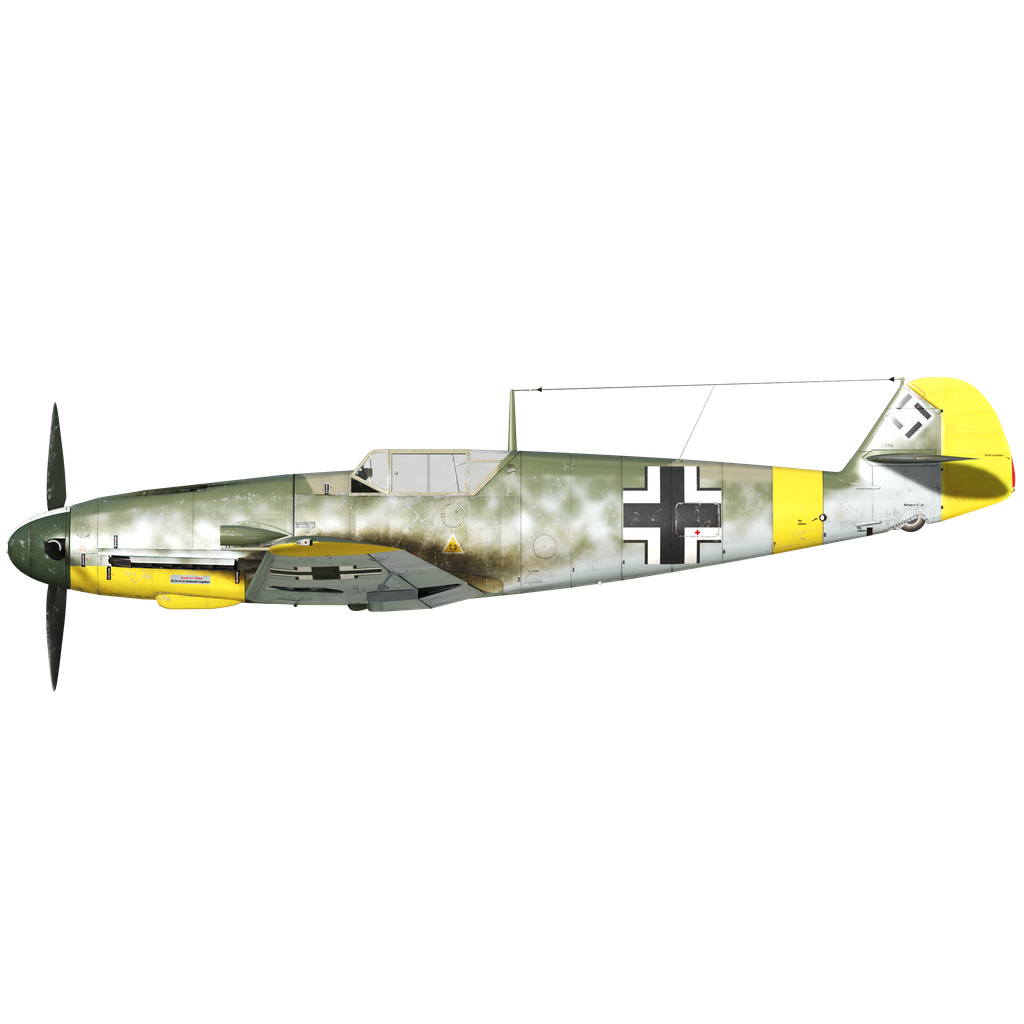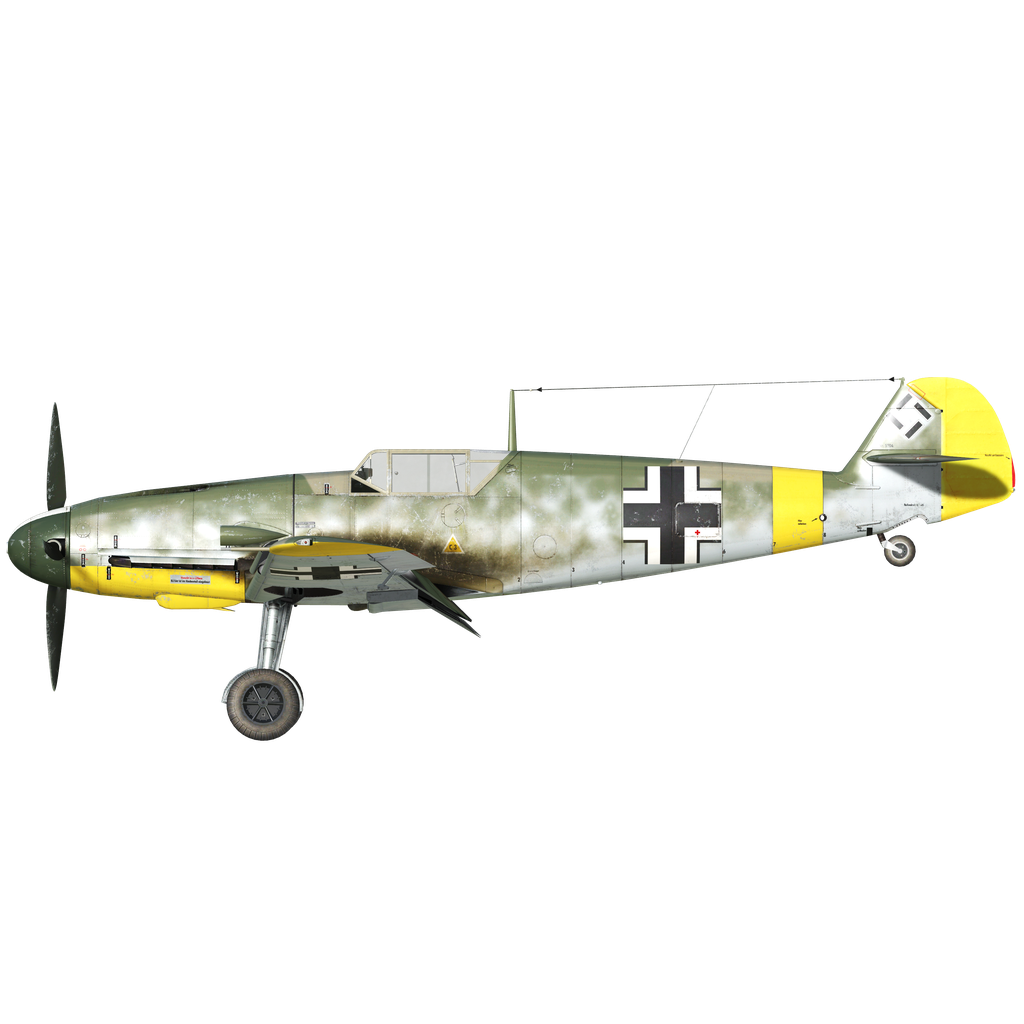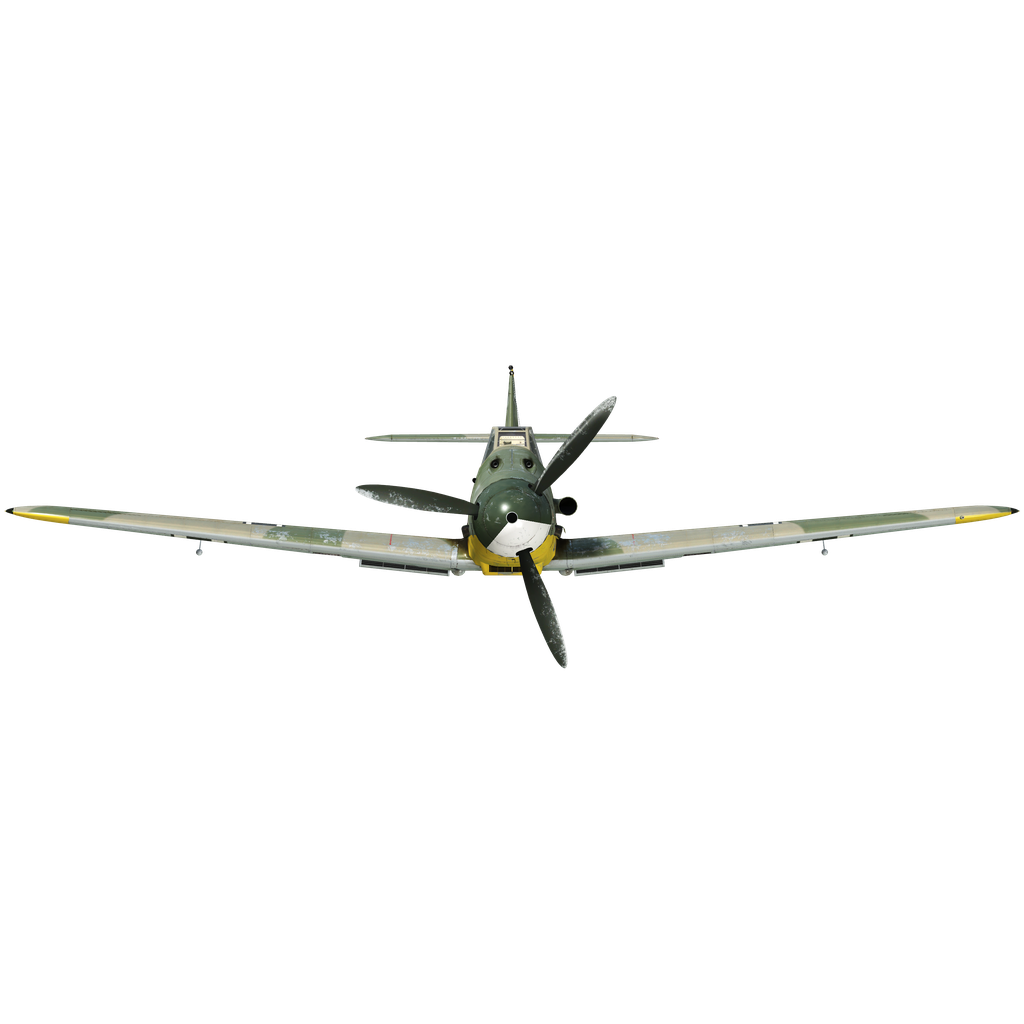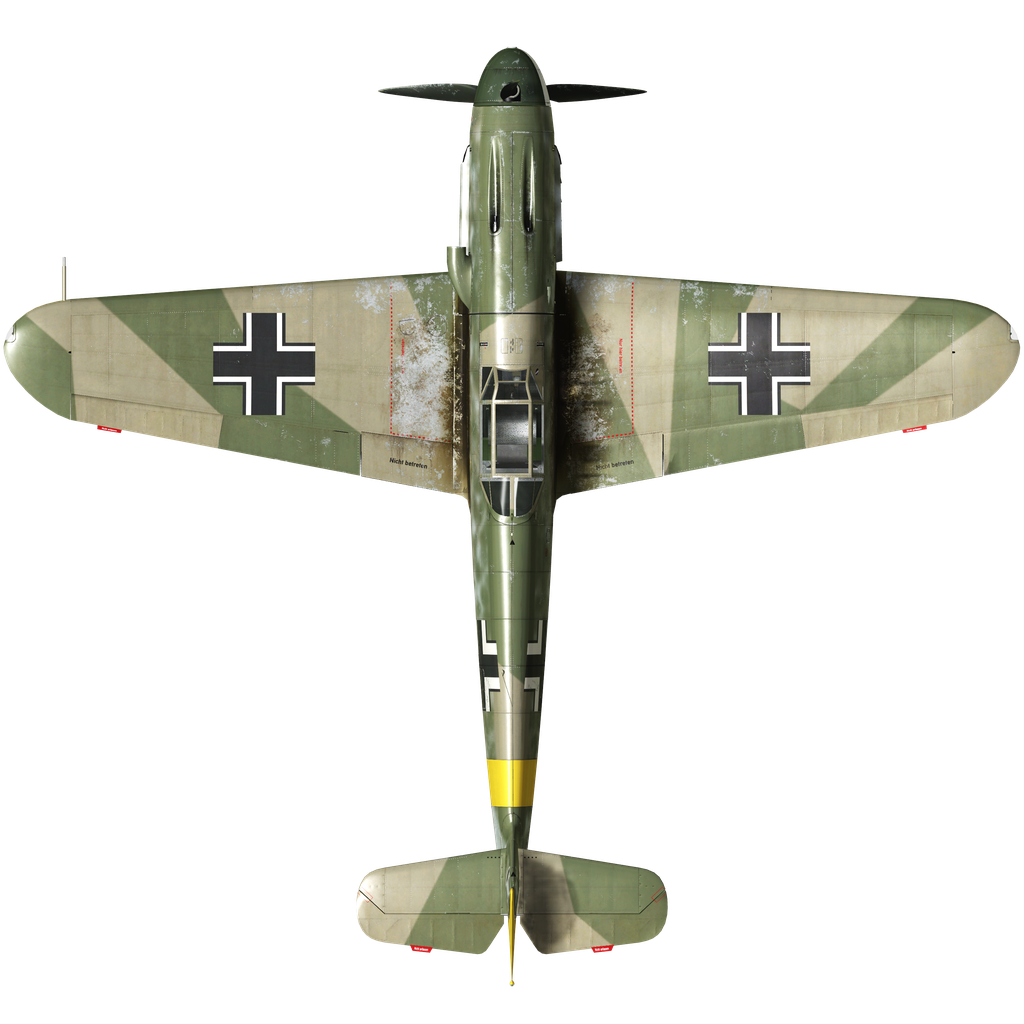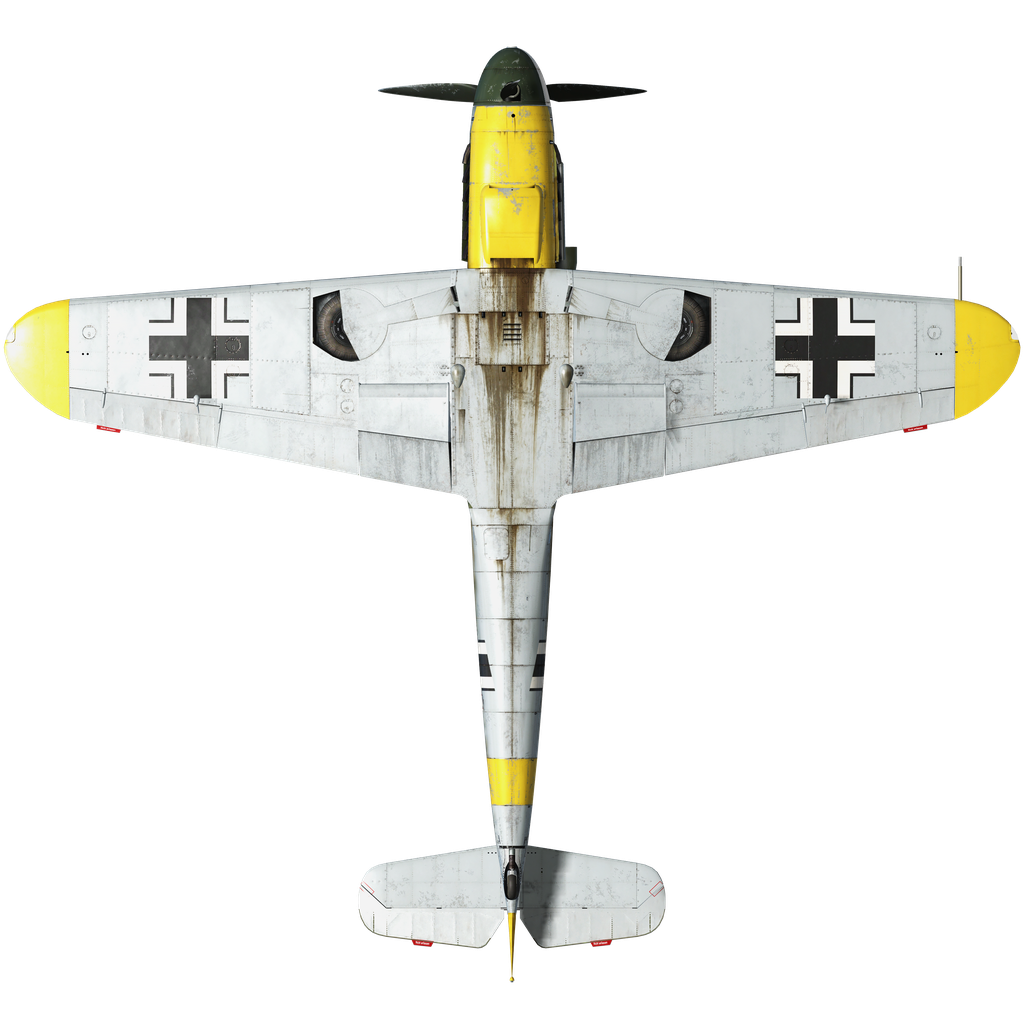The Messerschmitt Bf 109, the most mass-produced fighter of Hitler's Germany, appeared in 1934 in response to the Luftwaffe's request for the latest single-engine monoplane fighter. It was an all-metal low-wing aircraft with a water-cooled engine, retractable landing gear, and a tail wheel. The prototype's first flight took place on May 28, 1935, and in November 1936, the first aircraft were sent for military testing in Spain, where a civil war was raging. This decision was due to the failure of the He 51 biplanes, which were losing air battles to Soviet fighters. The Spanish debut ended successfully for the plane, mainly due to continuous improvements. From 1936 to 1938, 5 models were built — from the Bf 109 A "Anton" to the Bf 109 E "Emil" — and this latter model became the main machine in service with fighter squadrons.
The Second World War, which began in September 1939, made it necessary to take into account not only operational experience but also accumulated combat experience. Thus, in 1940, the designers began to radically improve the aerodynamics of the fighter to maximize the possibilities of the DB 601 engine. The result was the Bf 109 F "Friedrich."
The fighter received a new, more aerodynamically advanced engine cowling with an enlarged propeller cowl, improved coolant radiators in underwing mounts, a tail section without external bracing, and a semi-retractable tailwheel assembly. The track width of the main landing gear struts was slightly increased to improve landing characteristics. Special fairings on the wing of the "Emil" for the cannon magazines worsened the aerodynamics, so on the "Friedrich," all weapons were placed in the fuselage. These included a motor cannon, mounted between the cylinder banks and fired through the propeller shaft, and two synchronized 7.92 mm machine guns, similar to those of the previous series.
Originally it was planned to install a new version of the DB 601E engine with a takeoff power of 1350 hp and a new, more advanced Mauser MG 151 cannon, which had a higher rate of fire in comparison to MG/FF cannons, but neither the engine nor the cannon could be completed in time for the start of aircraft production. Pre-production versions of the Bf 109 F-0 and the first production Bf 109 F-1s were equipped with DB 601N engines and a 20 mm MG/FF cannon. As a result, the weight of the secondary salvo was almost halved compared to the previous model, but maneuverability and climb rate were significantly improved.
In September 1940, Mauser specialists succeeded in putting into serial production the MG 151 cannon with a caliber of 15 mm. This weapon with 200 rounds of ammunition was installed on the new production model of the Bf 109 F-2, but pilots continued to complain about the weakness of the armament. Like the previous series, the F-2 was powered by the DB 601N engine, which allowed it to reach speeds of up to 600 km/h at altitude.
-
F-2/B fighter-bomber with ETC 500 bomb rack under the fuselage for bombs up to 250 kg;
-
F-2/Trop tropical fighter with dust filter and new blower air intake;
-
F-2/Z high altitude fighter with nitrous oxide injection system, propeller with widened blades, blower air intake as on F-2/Trop, and large capacity oil cooler.
The total number of F-model Messerschmitts produced before June 22, 1941, can be estimated at around 1,850 units. In terms of flight characteristics, these machines surpassed all the fighters of the Allies in the anti-Hitler coalition, yielding only to some in horizontal maneuverability. Luftwaffe pilots won resounding victories with this variant in North Africa and on the Eastern Front in 1941. It was with this model that Messerschmitt's fame reached its peak, and the Bf 109 F was hailed as the perfect fighter.
Sources used:
1. W. Creen "The Warplanes of the Third Reich", Galahad Books, 1986
2. "Wings of the Luftwaffe" Translation of W. Green's book "Combat Airplanes of the Third Reich" by A. Firsov, 1993.
3. "Yak-1,7,9,3/ Bf 109 fighters" Journal of Aviation and Cosmonautics, 5-6, 1999.
4. Materials of the site airwar.ru
